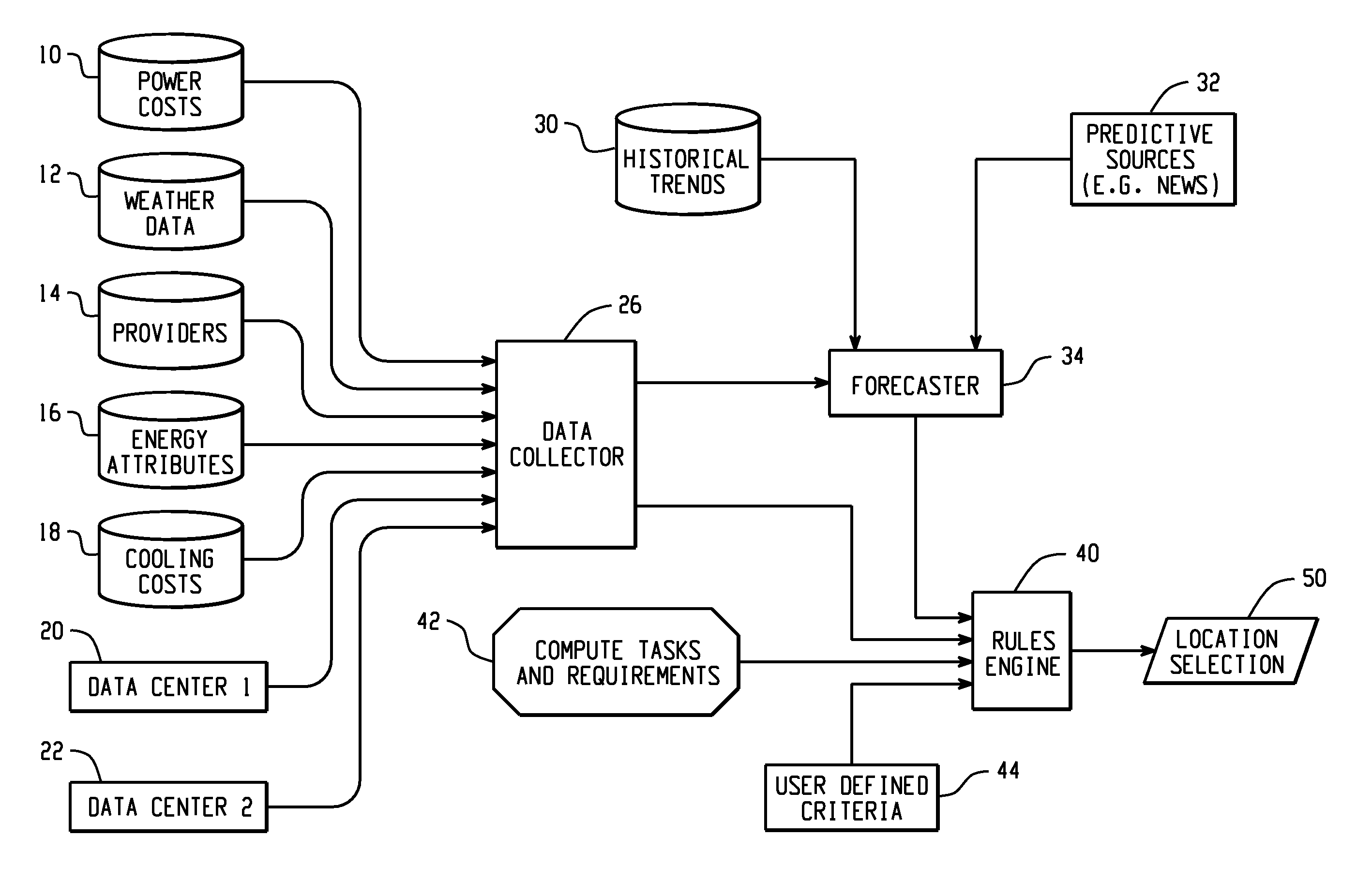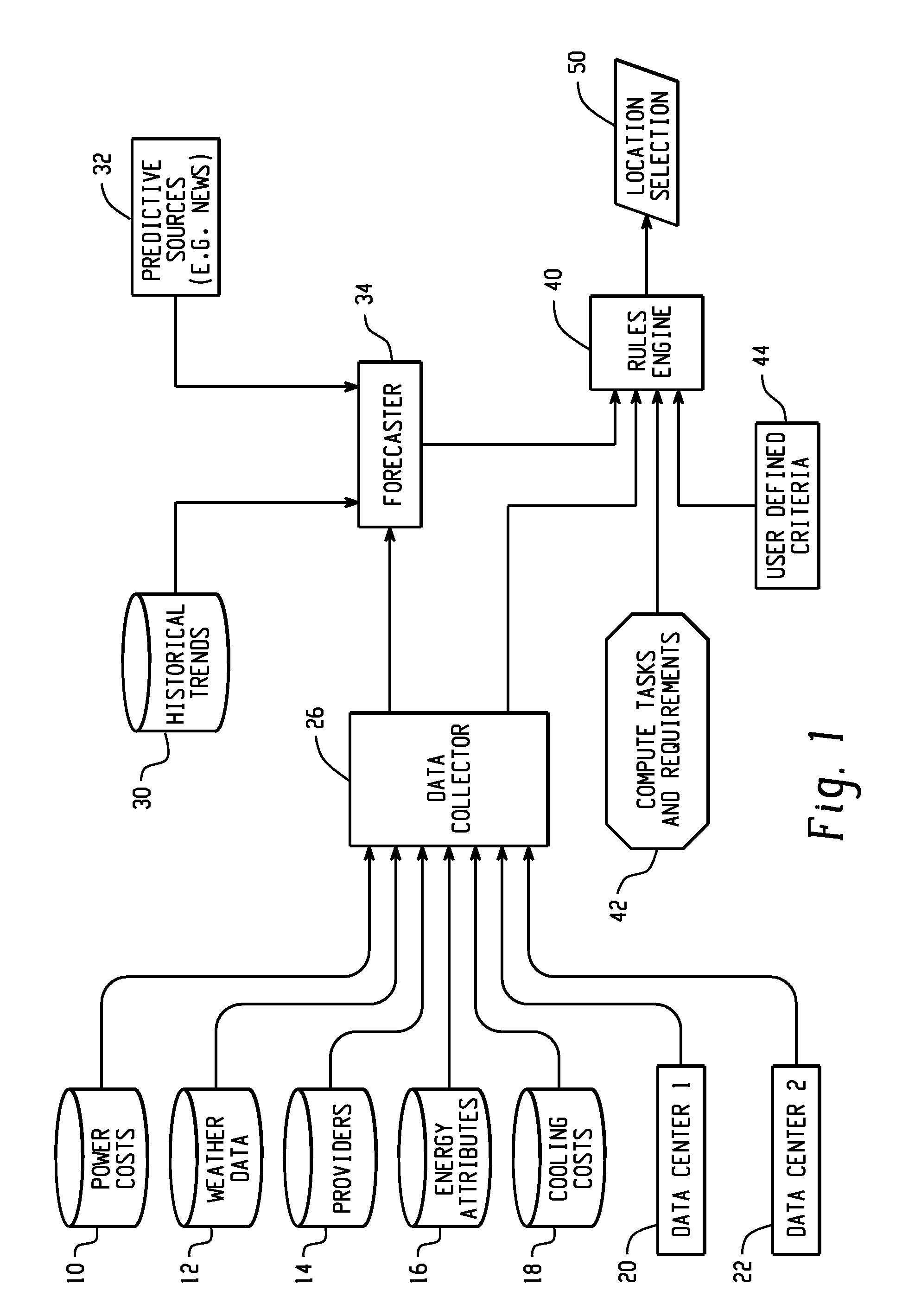Analysis of energy-related factors for selecting computational job locations
a computational job and energy-related factor technology, applied in the field of computer technology, can solve the problems of increasing power costs, affecting business budgets, and affecting the efficiency of operations, and reducing the burden on business budgets
- Summary
- Abstract
- Description
- Claims
- Application Information
AI Technical Summary
Benefits of technology
Problems solved by technology
Method used
Image
Examples
Embodiment Construction
[0014]In one embodiment, the present invention utilizes a rules engine to select a location and energy provider for running a computational job. Primarily, energy related criteria will be used although, optionally, non-energy criteria may be added as well. The following energy-related criteria may be considered, both for real-time values and short-term forecasts.[0015]Environmental conditions (temperature, humidity)[0016]Direct energy costs[0017]Air conditioning costs[0018]Third party “Data Center Efficiency Rating”[0019]Data center cooling methods and insulation[0020]Energy provider name[0021]Geographic source[0022]Methods used to generate energy (e.g. renewable sources, coal)[0023]Maximum amount of energy available[0024]Duration of time a rate is available
[0025]Optionally, users may also include non-power criteria, both for real-time values and short-term forecasts. Among these are the following:[0026]Speed of processing[0027]Data center charges[0028]Risks (e.g. pending storms or ...
PUM
 Login to View More
Login to View More Abstract
Description
Claims
Application Information
 Login to View More
Login to View More - R&D
- Intellectual Property
- Life Sciences
- Materials
- Tech Scout
- Unparalleled Data Quality
- Higher Quality Content
- 60% Fewer Hallucinations
Browse by: Latest US Patents, China's latest patents, Technical Efficacy Thesaurus, Application Domain, Technology Topic, Popular Technical Reports.
© 2025 PatSnap. All rights reserved.Legal|Privacy policy|Modern Slavery Act Transparency Statement|Sitemap|About US| Contact US: help@patsnap.com



